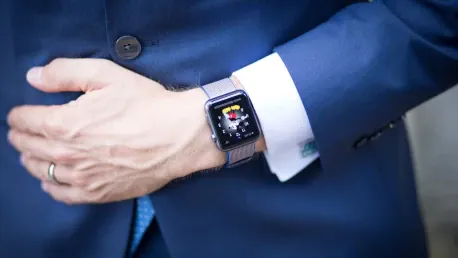Imagine the convenience of accessing a building or residence hall with just a tap of your smartwatch instead of fumbling for keys or a physical ID card. Allegion recently expanded its mobile credential technology to include support for Wear OS by Google smartwatches, providing this exact level of convenience to campuses that use Schlage mobile credentials like student IDs and employee badges. This innovative update allows users to secure access directly from their wearables, taking advantage of Allegion’s integration into Google Wallet on wearable devices. This enhanced convenience is now available to universities partnered with Allegion, enabling them to offer an advanced level of security and accessibility to students and employees.
Streamlining Access on Campus
Jeff Koziol, Business Development Manager – Mobile Credentials at Allegion, underscored the rising preference for digital IDs over traditional ones among students, highlighting the continually expanding Wallet experience. With the latest update, Schlage mobile credentials can be added not only to Android phones but also to Wear OS smartwatches through Google Wallet. This integration allows users to access buildings, residence halls, and other facilities equipped with Schlage NFC-enabled locks or readers with just a simple tap of their smartwatch. This evolution in access control marks a significant step towards seamless and secure campus access.
The integration covers all Allegion’s Schlage-branded wireless locks, including Series NDE and LE, XE360 Series, AD Series, and Schlage Control electronic locks, as well as MTB Series wall readers and RC Series reader controllers. This extensive support ensures that a wide range of access points can benefit from this modern approach to security and convenience. By incorporating Wear OS smartwatches into their access control systems, universities and other institutions can provide their members with a cutting-edge solution that simplifies day-to-day operations and enhances overall security.
The Role of Wear OS by Google
Wear OS by Google, an Android-based operating system designed for smartwatches and wearable devices, plays a pivotal role in this system. It pairs seamlessly with both Android smartphones (version 6.0 or newer) and iOS devices (version 10.0 or newer), offering capabilities that extend far beyond notifications and app integration. The platform includes Google Assistant functionality and mobile ID support, catering to diverse user groups such as students, corporate employees, and multi-family housing residents. Since its initial launch as Android Wear in 2014 and rebranding in 2018, Wear OS has incorporated connectivity options like Bluetooth, NFC, Wi-Fi, 3G, and LTE, making it a robust and versatile platform for wearable technology.
The market for Wear OS devices is heavily influenced by major manufacturers, with Samsung leading the charge. Other significant contributors include Fossil, LG, Motorola, and Huawei, all of which have developed devices that leverage Wear OS’s capabilities. This widespread adoption reflects the growing trend towards wearable technology and digital transformation in various sectors, including campus security. By integrating Wear OS smartwatches into their mobile credential technology, Allegion taps into this larger trend, providing its users with a modern, efficient, and secure method of accessing facilities.
Schlage Mobile Credentials and Industry Adoption
Allegion has been pioneering wallet-based mobile credentials since 2019 through strategic partnerships with major players in the mobile industry like Apple Wallet and Google Wallet. The benefits of integrating Wear OS into Allegion’s mobile credential offerings are in line with those provided by Apple iOS and other Android devices. This move not only enhances convenience but also fortifies security by eliminating the need for physical cards or keys and mitigating risks associated with misplaced IDs. Credentials stored on smartwatches are protected by multiple security layers, safeguarding sensitive information and allowing for easy removal if the device is lost or stolen. This ensures that users can access facilities securely and effortlessly, transforming the user experience with just a tap of their smartwatch.
Allegion’s introduction of this innovative technology has already seen implementation at several notable universities such as Notre Dame, Baylor University, and Auburn. These rollouts signify broad adoption and trust in the technology, reflecting the demand for more advanced and secure access solutions in educational institutions. By leveraging advances in mobile credential technology and the increasing popularity of wearable devices, Allegion has positioned itself as a key player in the push towards digital transformation in access control systems. This strategic move aligns with broader industry trends that favor enhanced security and user convenience, setting a new standard for campus access solutions.
In essence, Allegion’s expansion into Wear OS smartwatches signifies a major leap forward in the realm of campus access control. By integrating innovative technology with everyday devices, the company has paved the way for a more secure and convenient future for students, employees, and other users in multi-user environments. This development not only addresses current security challenges but also embraces the larger trend of digital transformation, offering a glimpse into the future of access control.
Looking Forward
With Allegion’s new update, the cumbersome process of managing keys and IDs becomes a thing of the past, improving the overall campus experience. Universities can now provide their communities with a more streamlined and secure method of access, reinforcing both safety and convenience for everyday campus interactions.









